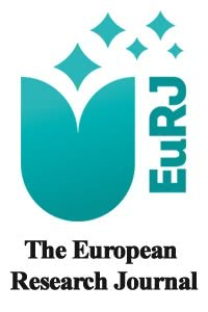Evaluation of the gender effect in operated prolactinomas
Evaluation of the gender effect in operated prolactinomas
Prolactinoma remission, sex, surgery,
___
- 1. Molitch ME. Diagnosis and treatment of pituitary adenomas: a review. JAMA 2017;317:516-24.
- 2. Majumdar A, Mangal NS. Hyperprolactinemia. J Hum Reprod Sci 2013;6:168-75.
- 3. Freda PU, Beckers AM, Katznelson L, Molitch ME, Montori VM, Post KD, et al; Endocrine Society. Pituitary incidentaloma: an endocrine society clinical practice guideline. J Clin Endocrinol Metab 2011;96:894-904.
- 4. De Sousa SMC. Dopamine agonist therapy for prolactinomas: do we need to rethink the place of surgery in prolactinoma management? Endocr Oncol 2022;2:R31-R50.
- 5. Zamanipoor Najafabadi AH, Zandbergen IM, de Vries F, Broersen LHA, van den Akker-van Marle ME, Pereira AM, et al. Surgery as a viable alternative first-line treatment for prolactinoma patients. a systematic review and meta-analysis. J Clin Endocrinol Metab 2020;105:e32-41.
- 6. Chen J, Liu H, Man S, Liu G, Li Q, Zuo Q, et al. Endoscopic vs. microscopic transsphenoidal surgery for the treatment of pituitary adenoma: a meta-analysis. Front Surg 2022;8:806855.
- 7. Colao A, Sarno AD, Cappabianca P, Briganti F, Pivonello R, Somma CD, et al. Gender differences in the prevalence, clinical features and response to cabergoline in hyperprolactinemia. Eur J Endocrinol 2003;148:325-31.
- 8. Burdman JA, Pauni M, Heredia Sereno GM, Bordón AE. Estrogen receptors in human pituitary tumors. Horm Metab Res 2008;40:524-7.
- 9. Yoo F, Chan C, Kuan EC, Bergsneider M, Wang MB. Comparison of male and female prolactinoma patients requiring surgical intervention. J Neurol Surg B Skull Base 2018;79:394-400.
- 10. Akin S, Isikay I, Soylemezoglu F, Yucel T, Gurlek A, Berker M. Reasons and results of endoscopic surgery for prolactinomas: 142 surgical cases. Acta Neurochir (Wien) 2016;158:933-42.
- 11. Demir D, Demir AN, Sulu C, Zulfaliyeva G, Cetintas SC, Ozkaya HM, et al. The combination of dopamine agonist treatment and surgery may be the best option in challenging prolactinoma cases: a single-centre experience. World Neurosurg 2023;175:e1166-74.
- 12. Colao A. Pituitary tumours: the prolactinoma. Best Pract Res Clin Endocrinol Metab 2009;23:575-96.
- 13. Ciccarelli A, Guerra E, De Rosa M, Milone F, Zarrilli S, Lombardi G, et al. PRL secreting adenomas in male patients. Pituitary 2005;8:39-42.
- 14. Burrow GN, Wortzman G, Rewcastle NB, Holgate RC, Kovacs K. Microadenomas of the pituitary and abnormal sellar tomograms in an unselected autopsy series. N Engl J Med 1981;304:156-8.
- 15. Delgrange E, Trouillas J, Maiter D, Donckier J, Tourniaire J. Sex-related difference in the growth of prolactinomas: a clinical and proliferation marker study. J Clin Endocrinol Metab 1997;82:2102-7.
- 16. Fainstein Day P, Glerean M, Lovazzano S, Pietrani M, Christiansen S, Balzaretti M, et al. Gender differences in macroprolactinomas: study of clinical features, outcome of patients and ki-67 expression in tumor tissue. Front Horm Res 2010;38:50-8.
- 17. Colao A, Sarno AD, Cappabianca P, Briganti F, Pivonello R, Somma CD, et al. Gender differences in the prevalence, clinical features and response to cabergoline in hyperprolactinemia. Eur J Endocrinol 2003;148:325-31.
- 18. Delgrange E, Sassolas G, Perrin G, Jan M, Trouillas J. Clinical and histological correlations in prolactinomas, with special reference to bromocriptine resistance. Acta Neurochir (Wien) 2005;147:751-8.
- 19. Hasanov R, Aydoğan Bİ, Kiremitçi S, Erden E, Güllü S. The prognostic roles of the Ki-67 proliferation index, P53 expression, mitotic index, and radiological tumor invasion in pituitary adenomas. Endocr Pathol 2019;30:49-55.
- 20. Arasho BD, Schaller B, Sandu N, Zenebe G. Gender-related differences in pituitary adenomas. Exp Clin Endocrinol Diabetes 2009;117:567-72.
- 21. Oh MC, Aghi MK. Dopamine agonist-resistant prolactinomas. J Neurosurg 2011;114:1369-79.
- 22. Han YL, Chen DM, Zhang C, Pan M, Yang XP, Wu YG. Retrospective analysis of 52 patients with prolactinomas following endoscopic endonasal transsphenoidal surgery. Medicine (Baltimore) 2018;97:e13198.
- ISSN: 2149-3189
- Yayın Aralığı: 6
- Başlangıç: 2015
- Yayıncı: Prusa Medikal Yayıncılık Limited Şirketi
Elif GUNDOGDU, Tuğba GÜL YILMAZ
The severity of hyponatremia worsens the outcome in pediatric intensive care patients
Arzu OTO, Seher ERDOĞAN, Mehmet BOŞNAK
Pharmacobiology of topical Ankaferd hemostat in neoplastic disorders
Ümit Yavuz MALKAN, İbrahim Celalettin HAZNEDAROĞLU
Anıl ERTURK, Gulay GOKCE, Nergis KENDER ERTURK
Prognostic value of the leuko-glycemic index in coronary chronic total occlusion patients
Tezcan PEKER, Mehmet ÖZBEK, Bedrettin BOYRAZ, Selen Filiz ASLAN, Muhammed DEMİR, Burhan ASLAN
Effect of celecoxib on intra-abdominal sepsis-induced lung injury in rats
Cengiz DIBEKOGLU, Ejder Saylav BORA, Ebru EROĞLU, Guner YURTSEVER, Yiğit UYANIKGİL, Oytun ERBAŞ
Zeynep KARAGÜN, Deniz ÇELİK, Mehmet Sinan AYDIN, İbrahim GÜNDOĞMUŞ, Yusuf Tuğrul ŞİPİT
Prognostic factors in atypical carcinoid tumors
Ahmet Bilgehan ŞAHİN, Erdem ÇUBUKÇU, Adem DELİGÖNÜL, Birol OCAK, Huseyin MELEK, Buket ERKAN OZMARASALİ, Burcu CANER, Ahmet BAYRAM, Elif Ülker AKYILDIZ, Türkkan EVRENSEL
